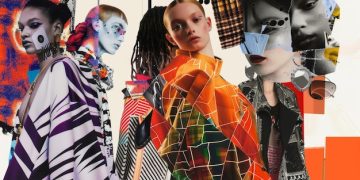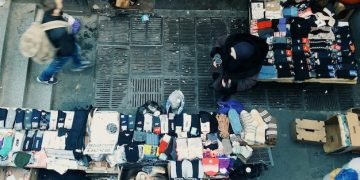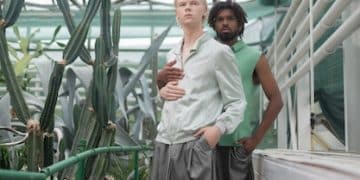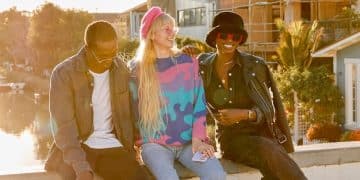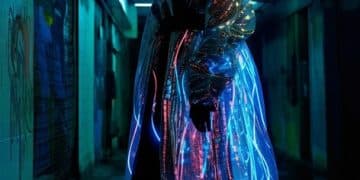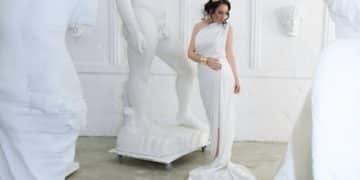Underground Fashion: Analyzing 2025 Mainstream Trends
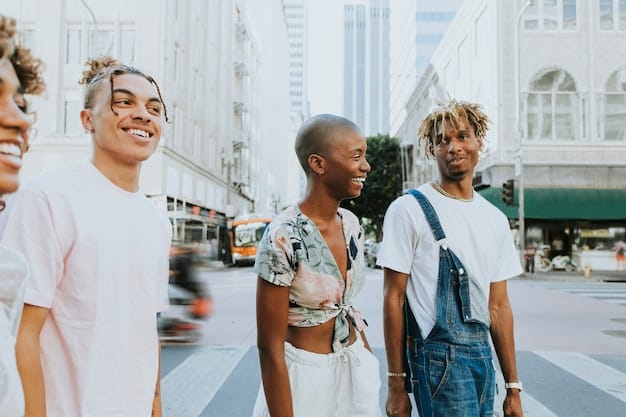
Underground fashion’s influence on mainstream trends in 2025 is marked by a fusion of individuality and technology, where digital culture, sustainable practices, and inclusive designs drive aesthetic shifts in the broader fashion landscape.
In 2025, the lines between underground and mainstream fashion continue to blur, driven by social media, innovative technologies, and a growing demand for authenticity. This analysis explores underground fashion’s influence on mainstream trends in 2025, examining key movements and their impact on the broader fashion industry.
Key Drivers Shaping Underground Fashion
Several factors are accelerating the evolution of underground fashion and its influence on mainstream trends. These drivers range from technological advancements to shifting cultural values, creating a dynamic landscape where creativity and innovation thrive.
Technological Integration
Technology is no longer just a tool but an integral part of fashion design and consumption. From virtual fashion shows to personalized AI-driven style recommendations, technology enhances the underground fashion experience.
Sustainability and Ethical Concerns
Growing awareness of environmental issues and ethical labor practices drives demand for sustainable and ethically produced clothing. Underground brands are often at the forefront of eco-conscious fashion.
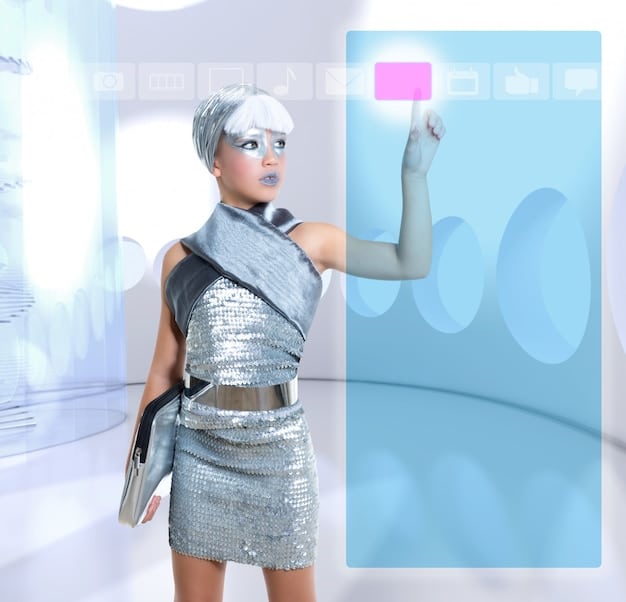
Here are key elements in the evolution of underground fashion:
- Digital Art and Design: The explosion of NFTs and digital art has directly influenced fashion, with designers creating wearable digital art and virtual garments.
- Customization Technologies: 3D printing and laser cutting enable individuals and small brands to create unique, customized pieces, challenging mass production norms.
- Social Media Influence: Platforms like TikTok and Instagram amplify niche aesthetics, allowing underground styles to rapidly gain mainstream attention.
In summary, the convergence of technology, sustainability, and evolving social perspectives is fueling the creativity and accessibility of underground fashion, leading to its increased impact on mainstream trends.
Emerging Subcultures Impacting Fashion
Various subcultures, often born in online communities, are pushing the boundaries of fashion. These subcultures are characterized by their unique aesthetics, values, and approaches to self-expression.
Neo-Goth and Dark Academia
Neo-Goth blends traditional goth elements with modern sensibilities, while Dark Academia draws inspiration from classical literature and architecture, creating sophisticated and melancholic aesthetics.
Cyberpunk and Techwear
These styles emphasize functionality and futuristic aesthetics, often featuring utilitarian designs, technical fabrics, and cyberpunk-inspired accessories. They reflect a fascination with technology and a dystopian vision of the future.
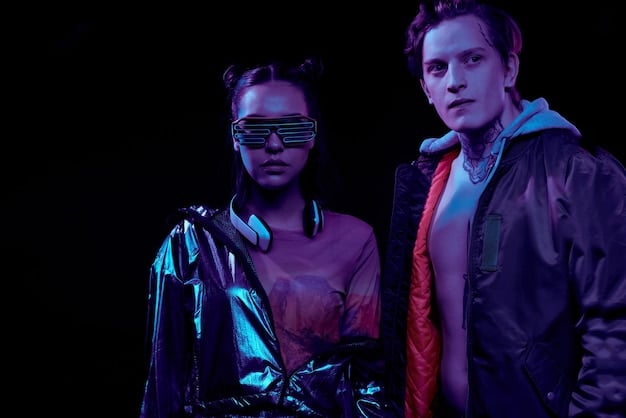
Here are other notable emerging style trends:
- Cottagecore: An aesthetic celebrating rural life, featuring vintage-inspired dresses, floral prints, and handmade accessories.
- Regencycore: Inspired by the Regency era, this trend incorporates elements like empire waistlines, delicate fabrics, and ornate embellishments.
- Y2K Revival: A nostalgic embrace of the early 2000s fashion, characterized by low-rise jeans, crop tops, and vibrant colors.
In conclusion, emerging subcultures continue to reshape fashion by introducing unique aesthetics and values, driving mainstream trends towards more diverse and expressive styles.
The Role of Social Media and Influencers
Social media platforms serve as vital conduits for disseminating underground fashion trends. Influencers play a pivotal role in showcasing and popularizing niche styles, driving their adoption by wider audiences.
TikTok’s Impact on Fashion Cycles
TikTok’s algorithm accelerates trend cycles, allowing niche aesthetics to rapidly gain viral status. Fashion challenges and micro-trends proliferate on the platform, influencing mainstream fashion trends.
Instagram’s Visual Influence
Instagram’s emphasis on visual content makes it a powerful platform for showcasing underground fashion. Influencers curate visually compelling feeds that inspire followers to adopt emerging styles.
Here are key aspects influencers bring to the fashion world:
- Authenticity and Relatability: Underground fashion influencers often prioritize authenticity and relatability, fostering trust with their audiences.
- Community Building: Influencers create communities around specific aesthetics, providing spaces for self-expression and style exploration.
- Collaboration with Emerging Brands: Influencers collaborate with underground brands, providing them with exposure and credibility.
In summary, social media and influencers are powerful forces in the fashion landscape, accelerating trend cycles, amplifying niche aesthetics, and fostering a more inclusive and expressive fashion culture.
Sustainable and Ethical Practices in Underground Fashion
Sustainability and ethical production are core values in the underground fashion scene. Brands are pioneering innovative approaches to minimize environmental impact and promote fair labor practices.
Upcycling and Repurposing
Upcycling involves transforming waste materials into new, high-value products. Underground designers often repurpose vintage clothing, fabric scraps, and discarded items, creating unique and eco-friendly pieces.
Ethical Manufacturing and Transparency
Many underground brands prioritize ethical manufacturing, ensuring fair wages and safe working conditions for garment workers. Transparency in the supply chain is also a key focus, allowing consumers to make informed purchasing decisions.
Consider these sustainable initiatives:
- Use of Sustainable Materials: Underground brands are increasingly using organic cotton, recycled polyester, and innovative materials like mushroom leather and seaweed fabric.
- Local Production: Producing locally reduces carbon emissions associated with transportation and supports local economies.
- Minimal Waste Design: Designers employ techniques like zero-waste pattern cutting to minimize fabric waste during the production process.
In conclusion, sustainability and ethical production are integral to the underground fashion movement. By embracing innovative practices and prioritizing transparency, brands are leading the way toward a more responsible and conscious fashion industry.
The Impact of Virtual and Digital Fashion
Virtual and digital fashion are transforming the way we interact with clothing. From virtual try-ons to digital-only garments, technology is expanding the possibilities for self-expression and sustainable consumption.
Virtual Fashion Shows and Digital Avatars
Virtual fashion shows allow designers to showcase their collections in immersive digital environments. Digital avatars enable individuals to express their style and identity in the metaverse, without the need for physical clothing.
NFTs and Wearable Digital Art
NFTs (Non-Fungible Tokens) are revolutionizing the fashion industry by providing a way to authenticate and own digital assets. Wearable digital art allows individuals to collect and showcase unique virtual fashion pieces.
Virtual fashion fosters creativity:
- Reduced Environmental Impact: Digital-only garments eliminate the environmental impact associated with physical production, shipping, and disposal.
- Accessibility and Inclusivity: Virtual fashion is accessible to anyone with an internet connection, regardless of physical location or body type.
- Innovative Design: Digital tools enable designers to experiment with new forms, textures, and functionalities that are not possible with physical materials.
In summary, virtual and digital fashion are reshaping the industry by providing new avenues for self-expression, sustainable consumption, and innovative design, bridging the gap between the physical and digital worlds.
Predictions for Underground Fashion in 2025
Looking ahead, several trends are poised to shape the future of underground fashion. These include the continued integration of technology, the emphasis on sustainability, and the growing demand for personalized and inclusive styles.
AI-Driven Style Recommendations
AI algorithms will analyze individual preferences and provide personalized style recommendations, helping consumers discover unique and emerging brands. This technology will make underground fashion more accessible and tailored to individual tastes.
3D-Printed Clothing and Accessories
3D printing will become more accessible and affordable, allowing individuals to create customized clothing and accessories at home. Underground designers will leverage this technology to produce limited-edition pieces and personalized designs.
Underground fashion will continue to evolve by:
- Increased Emphasis on Inclusivity: Brands will prioritize inclusive sizing, gender-neutral designs, and representation of diverse body types and identities.
- Collaboration between Artists and Designers: Underground fashion will foster more collaborations between artists and designers, creating unique and expressive pieces.
- Decentralized Fashion Networks: Blockchain technology will enable decentralized fashion networks, allowing designers to connect directly with consumers and bypass traditional retail channels.
In conclusion, underground fashion in 2025 will be characterized by innovation, sustainability, and inclusivity. By embracing technology, prioritizing ethical practices, and fostering creativity, underground brands will continue to influence mainstream trends and shape the future of fashion.
| Key Aspect | Brief Description |
|---|---|
| ✨ Tech Integration | Digital art, customization, and social media influence style. |
| 🌱 Sustainability | Upcycling, ethical manufacturing, and eco-friendly materials. |
| 🚀 Virtual Fashion | Digital avatars, NFTs, and virtual fashion shows. |
| 🎭 Subcultures | Neo-Goth, Cyberpunk and Y2K revival. |
Frequently Asked Questions
Underground fashion is characterized by its unconventional, innovative, and often rebellious nature, typically emerging from subcultures and niche communities, pushing boundaries and challenging mainstream norms.
Social media platforms like TikTok and Instagram accelerate the spread of underground fashion trends by providing platforms for influencers to showcase unique styles and connect with wider audiences.
Sustainability is a core value in underground fashion, with brands prioritizing ethical manufacturing, upcycling, and the use of sustainable materials to minimize environmental impact and promote responsible consumption.
Technology is integrated through virtual fashion shows, digital avatars, NFTs, and AI-driven style recommendations, enhancing creativity, personalization, and accessibility in underground fashion.
Emerging subcultures include Neo-Goth, Cyberpunk, Cottagecore and Y2K revival, each influencing fashion with unique aesthetics and values, contributing to a diverse and expressive fashion landscape.
Conclusion
As we move into 2025, underground fashion’s influence on mainstream trends is only set to grow. Driven by technology, sustainability, and a desire for authenticity, the styles and values of these niche communities will shape the broader fashion industry, paving the way for more creative, inclusive, and responsible practices.
